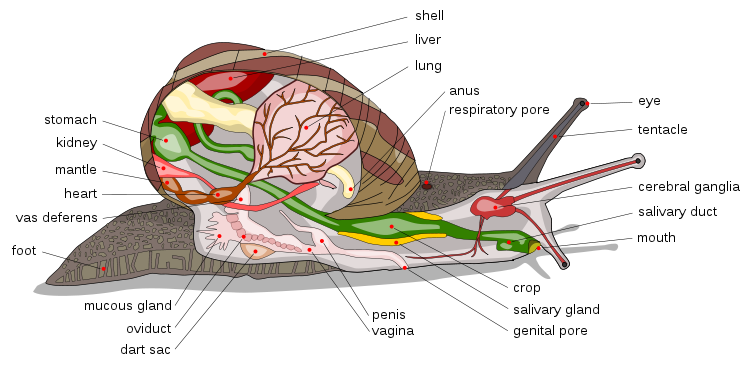The Blaze: Does the Bible Really Condone Stoning?
A while back, but you’ll forgive me for not posting this earlier because I’m lazy, the Glennbeckistan Times posted an article with the provocative title, Fact Check: Does the Bible Really Condone Stoning?.
Spoiler alert:
Theologian R.P. Nettelhorst added that capital punishment is seen in the Bible for a variety of offenses: Murder, adultery, rape, Sabbath breaking, disobedience to parents, witchcraft, and idolatry.
That answers the question posed in the title: yes, the Bible does condone stoning. Glad we’ve cleared that up. Oh, wait, did someone have any excuses theology to offer? (Emphasis added)
Rabbi Aryeh Spero, author of “Push Back: Reclaiming Our American Judeo-Christian Spirit,” told TheBlaze that the Bible speaks openly about stoning, however he said that the Judeo-Christian texts differ greatly from “the procedures we see today in Islamic countries.”[…]
“Any Biblical death penalty procedure had to be accomplished in one instantaneous stroke,” he explained. “For while the death penalty may have been administered, it was not done in a way to prolong agony or suffering, nor in a manner of public humiliation that degraded the human being created in the image of God.”
Okay, so the Bible condones stoning for a number of offenses, but not the way the Taliban does it, so that’s okay.
Back to Nettelhorst:
“The laws are applied equally to all members of society. There are not different laws for different classes,” he told TheBlaze. “Second, the laws were intended to be proportional. The lex talionis ‘eye for eye, tooth for tooth’ was designed to limit punishments to being no worse than the offense.”
Proportional? Really? This is the guy who said that the Bible prescribes the death penalty for things like adultery, Sabbath breaking, and disobedience to parents.
Which of these merits the death penalty? Show me the kind of aggravated premeditated first-degree Sabbath-breaking that warrants death. Here’s what Nettelhorst gives us:
“An individual who breaks the Sabbath (by gathering firewood on Saturday) shortly after the Sabbath was instituted by the Ten Commandments, is soon dispatched after a brief consultation with God. It is the only instance in the Bible of someone being executed for violating the Sabbath.
The article provides several more instances of this: cases in the Bible where people weren’t execute for trivial crimes. So the argument seems to be “the law is rarely enforced, so it’s not a bad law.”
What else?
He also detailed 2 Kings 10:18-28, noting that, while it appears that God’s blessing is upon Jehu, who gathers servants, priests and prophets of Baal and executes them for worshipping other gods, this may not actually be the case. After these deaths — and a coup against the former king and royal family — God seemed anything but pleased.
So Jehu does what God wants, as far as he can tell, and then it turns out that’t not what God wanted after all. I’m not sure what the lesson is, here: that God sucks at communicating his desires, maybe? At any rate, if this explanation is correct, then how can you be sure that anything you do has God’s blessing? With your finite human brain, you might be misreading things entirely.
Anything else?
For those who struggle with the notion that everything in the Bible is God’s word and should be taken literally, Spero explained that the Old Testament includes certain societal practices and occurrences that were meant to — and have — changed as mankind has matured and evolved.
Ah. This is a Jewish variant of “oh, but that’s the Old Testament!” Spero probably goes into more length in his book, but in this article, he gives no reason to think that he hasn’t just pulled this excuse out of thin air. Especially since the problem with divine law seems to be that it can’t be changed.
Just recently, for instance, we’ve learned about a ring of Jewish kidnappers: under Jewish law, a couple can only get divorced if the husband okays it. So a woman could give these guys $70,000-$80,000 and they’d kidnap her husband and beat him up or torture him until he agreed to the divorce. It would be far better for everyone to just change the law so that the husband’s consent isn’t mandatory. Except that if it’s God’s law — or perceived to be God’s law — then the law is very hard to change. (And if you can’t even repeal stoning, then what chance is there of repealing God’s no-cheeseburgers rule?)
Finally:
The contradiction, the theologian [Nettelhorst] says, might be rooted in the notion that there was a disconnect between what ancient Israelites thought God wanted verses what the Lord really requested of them.
So to sum up, yes, the Bible condones stoning people to death for minor offenses, but it’s okay because:
- It wasn’t done for fun.
- It was intended to be a quick death.
- It usually wasn’t enforced.
- It’s the Old Testament. Nobody does that anymore.
- It may not have been God’s law to begin with.
Have I missed anything? Because it looks to me as though pile of apologetics doesn’t address the central problem, which is that THE BIBLE CONDONES AND EVEN COMMANDS STONING FOR TRIVIAL OFFENSES.
Did it used to be okay to stone people for breaking the Sabbath, but now it isn’t? Then God’s moral law isn’t absolute, but changes over time.
Did God’s law change, but God forgot to edit his rulebook to reflect this fact? Then he sucks at communicating his wishes.
Was that not God’s law to begin with, but mere humans’? Then there are probably other mere-human laws in the Bible as well. How do you know which is which? (And if we can’t tell them apart, why bother consulting the Bible to begin with?) And why didn’t God make it clearer that he’s opposed to killing people who break the sabbath?
This reminds me of Bryan Fischer’s commentary on slavery in the Bible. He uses a lot of words, but it basically boils down to “the US did slavery wrong”, the obvious implication being that there’s a right way to do slavery: by following God’s rules and regulations for how to correctly own another human being.
One irony here is that I think this sort of thing is more of a problem for liberal, enlightened theists than for knuckle-draggers. The crazy Taliban types will just accept that God condones stoning, or slavery, or whatever. They’ll nod and do these horrible things.
A Christian can look at the Koran — or a Muslim can look at the Bible — and say “Meh. That’s clearly not a consistently-good set of moral rules. I’ll just ignore it and seek enlightenment elsewhere”.
But it’s the liberal Christian who looks at the Bible, sees that it condones things that are clearly immoral; but it’s supposed to be God’s word, so you can’t just ignore it; who then has to spend time and mental effort trying to reconcile what’s right with what’s in the Bible.

